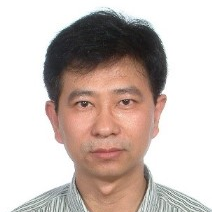A Theme Issue Honoring Professor Peter Proksch's 70th Birthday: Bioactive Compounds from the Ocean
A special issue of Marine Drugs (ISSN 1660-3397). This special issue belongs to the section "Structural Studies on Marine Natural Products".
Deadline for manuscript submissions: closed (6 December 2023) | Viewed by 36677
Special Issue Editors
Interests: natural product chemistry; bioactive compounds; drug discovery; structure determination
Special Issues, Collections and Topics in MDPI journals
Special Issue Information
Dear Colleagues,
This commemorative Special Issue on bioactive compounds from the ocean is in honor of Prof. Dr. Peter Proksch for his 70th birthday. Prof. Dr. Proksch is an internationally recognized scientist in research on both terrestrial and marine natural products.
Marine organisms live in a complex chemical buffer system of seawater with higher pressure and salinity, lower temperature, and limited dissolved oxygen and sunlight. To cope with the special environmental stresses, marine organisms have evolved specific genetic capabilities to produce novel bioactive products or so-called small-molecule secondary metabolites, which play important roles in adaptation to environments, species communication, and biotechnological as well as pharmaceutical applications.
Prof. Dr. Proksch worked with terrestrial plants in the early stage of his career and started to work on marine natural products some thirty years ago. He once said, “When I started to work on marine natural products I was attracted to this fascinating field of science by the exotic environment, the colourful shapes of (mostly) marine invertebrates and their complex ecological interactions”. In parallel to marine macroorganisms, he soon embarked on studying natural products from marine-derived microorganisms, discovering a huge amount of biodiversity and highly unusual and complex microbial natural products.
In honor and recognition of Prof. Dr. Proksch’s outstanding contributions to research on marine natural products, this Special Issue welcomes the submission of original research articles, reviews, and communications in this research field. The topics of this Special Issue include, but are not limited to:
- Isolation, structure elucidation, and bioactivity of new molecules from marine organisms.
- Characterization of proteins, enzymes, and saccharides from marine organisms.
- Biosynthesis of bioactive compounds from marine organisms.
- Design, synthesis, modification, and structure–activity relationship of bioactive compounds from marine organisms.
- Pharmacological mechanisms of bioactive compounds from marine organisms.
Prof. Dr. Bin-Gui Wang
Prof. Dr. Haofu Dai
Guest Editors
Manuscript Submission Information
Manuscripts should be submitted online at www.mdpi.com by registering and logging in to this website. Once you are registered, click here to go to the submission form. Manuscripts can be submitted until the deadline. All submissions that pass pre-check are peer-reviewed. Accepted papers will be published continuously in the journal (as soon as accepted) and will be listed together on the special issue website. Research articles, review articles as well as short communications are invited. For planned papers, a title and short abstract (about 100 words) can be sent to the Editorial Office for announcement on this website.
Submitted manuscripts should not have been published previously, nor be under consideration for publication elsewhere (except conference proceedings papers). All manuscripts are thoroughly refereed through a single-blind peer-review process. A guide for authors and other relevant information for submission of manuscripts is available on the Instructions for Authors page. Marine Drugs is an international peer-reviewed open access monthly journal published by MDPI.
Please visit the Instructions for Authors page before submitting a manuscript. The Article Processing Charge (APC) for publication in this open access journal is 2900 CHF (Swiss Francs). Submitted papers should be well formatted and use good English. Authors may use MDPI's English editing service prior to publication or during author revisions.
Keywords
- marine natural products
- bioactive compounds
- chemical structure
- biosynthetic pathway
- pharmacological mechanism
Benefits of Publishing in a Special Issue
- Ease of navigation: Grouping papers by topic helps scholars navigate broad scope journals more efficiently.
- Greater discoverability: Special Issues support the reach and impact of scientific research. Articles in Special Issues are more discoverable and cited more frequently.
- Expansion of research network: Special Issues facilitate connections among authors, fostering scientific collaborations.
- External promotion: Articles in Special Issues are often promoted through the journal's social media, increasing their visibility.
- e-Book format: Special Issues with more than 10 articles can be published as dedicated e-books, ensuring wide and rapid dissemination.
Further information on MDPI's Special Issue polices can be found here.








